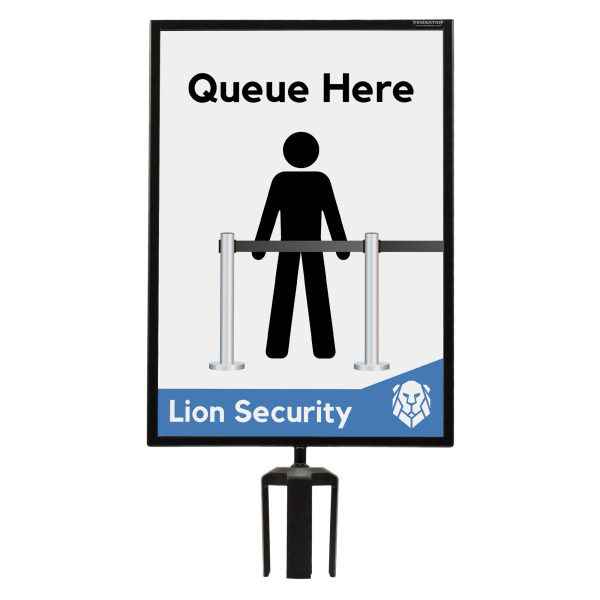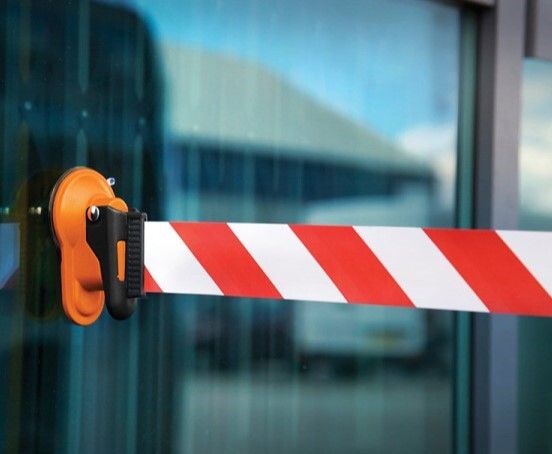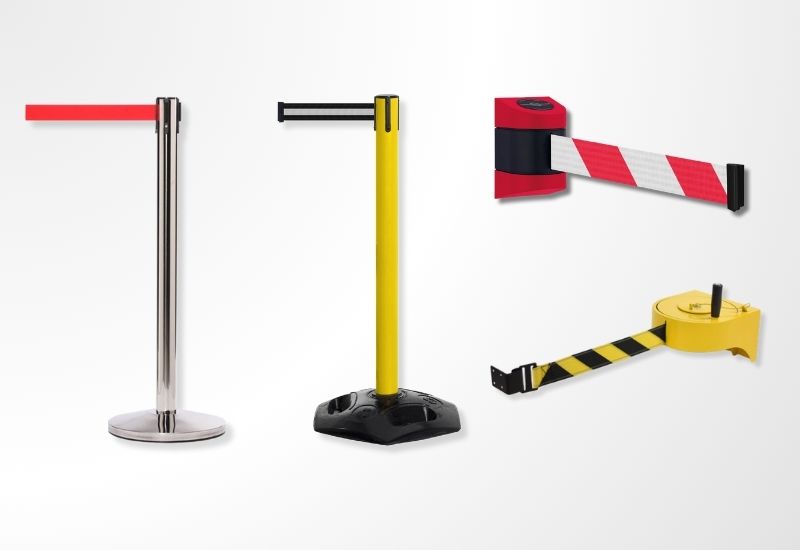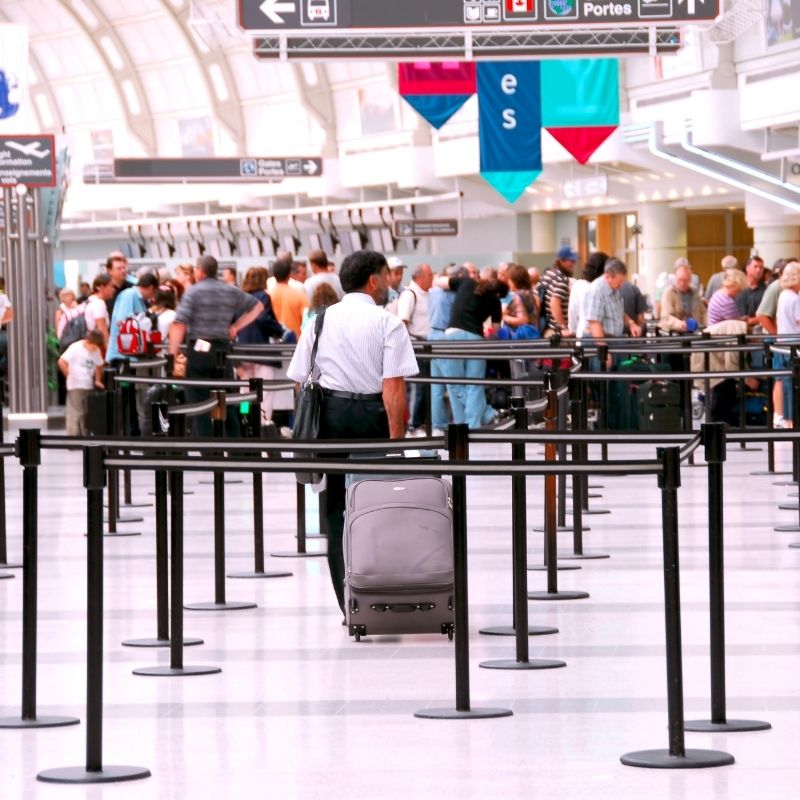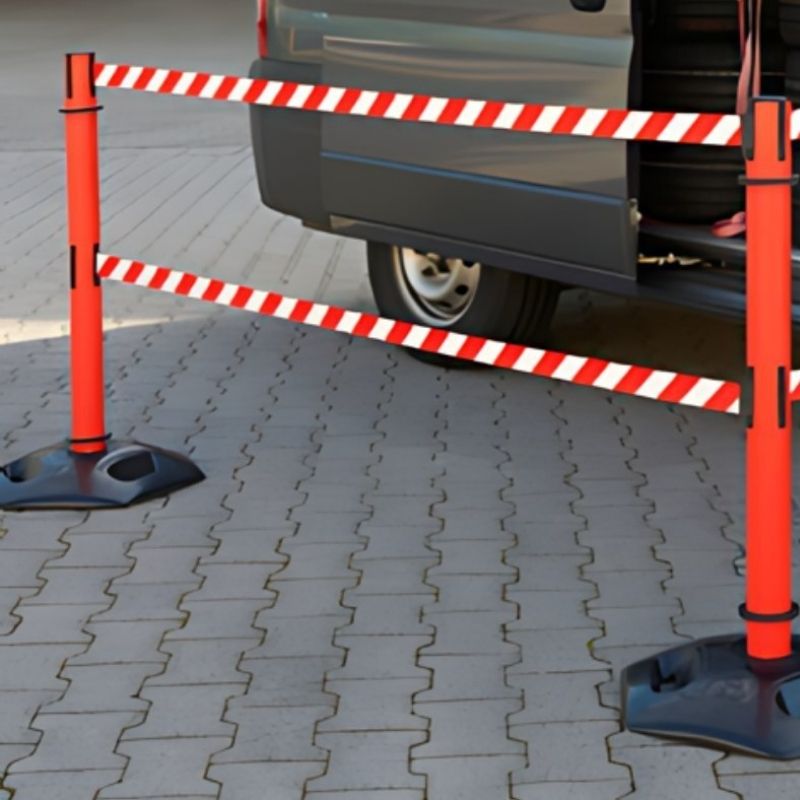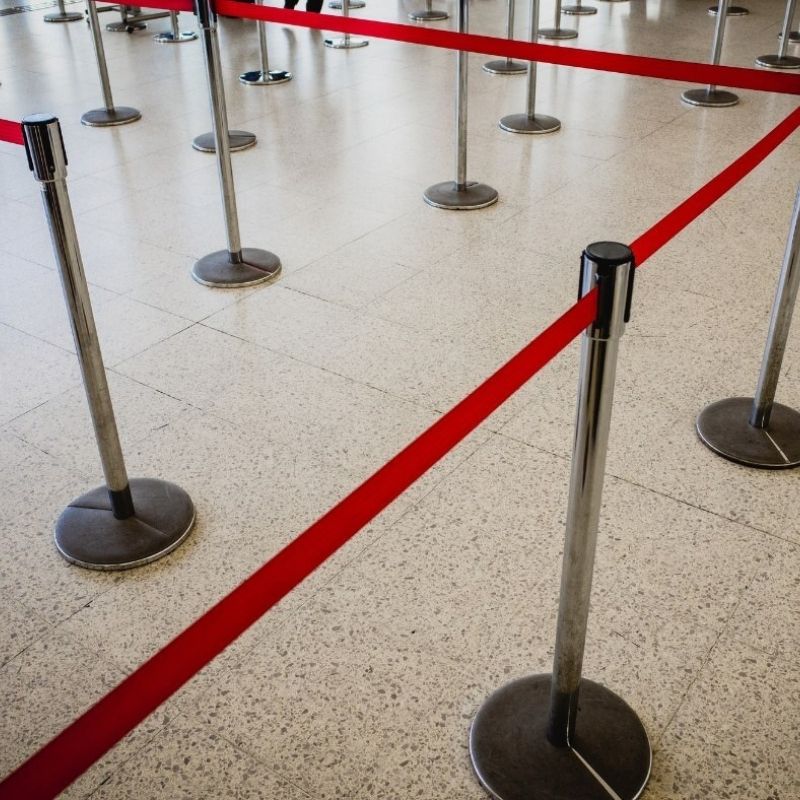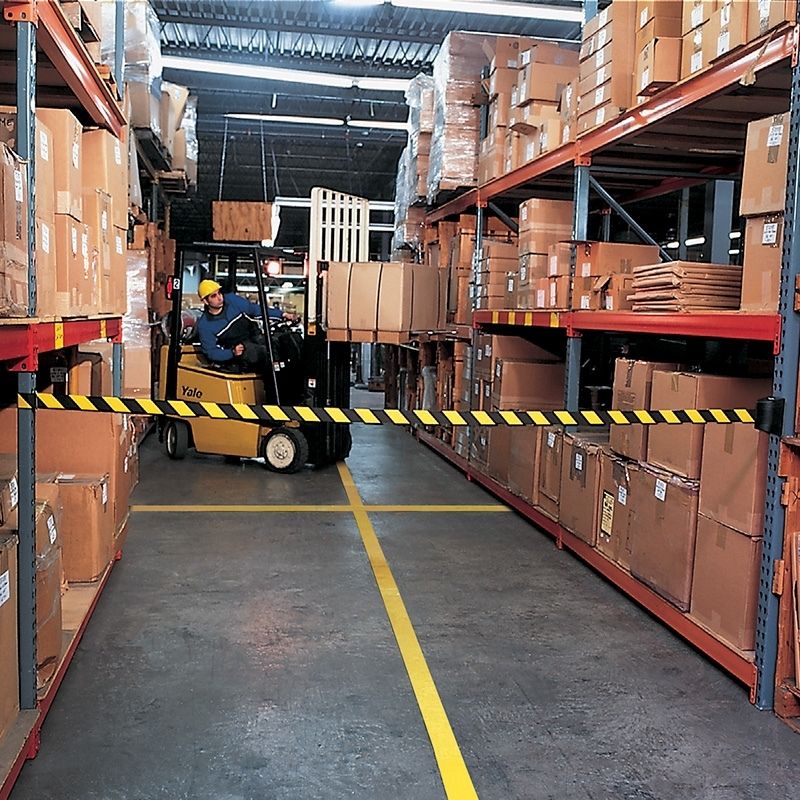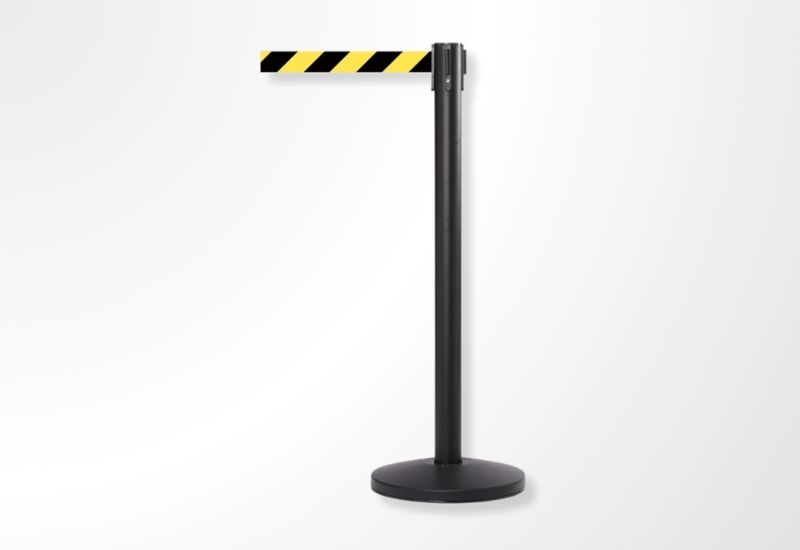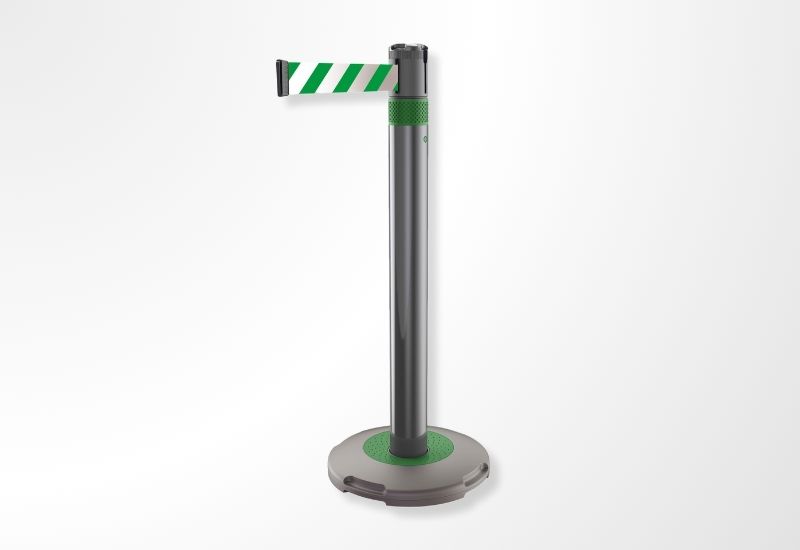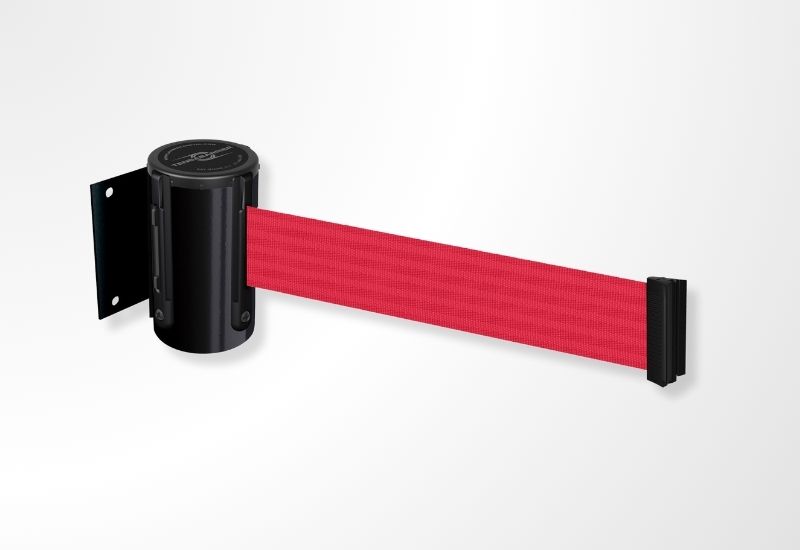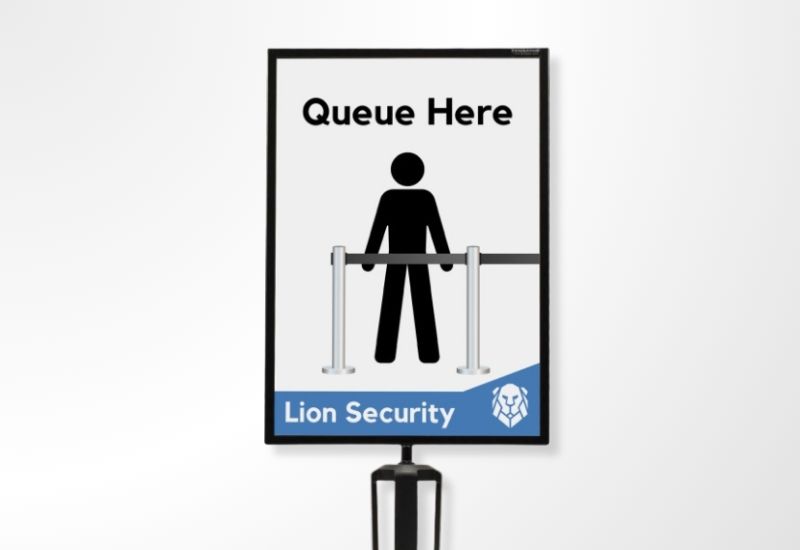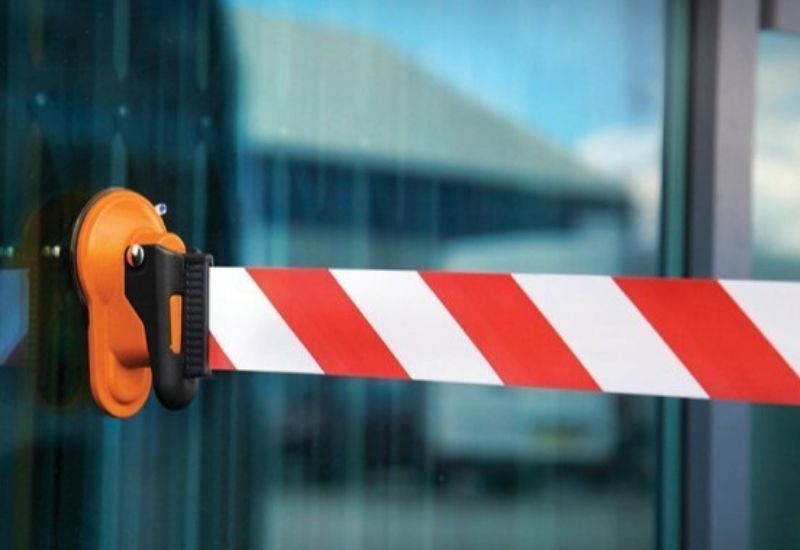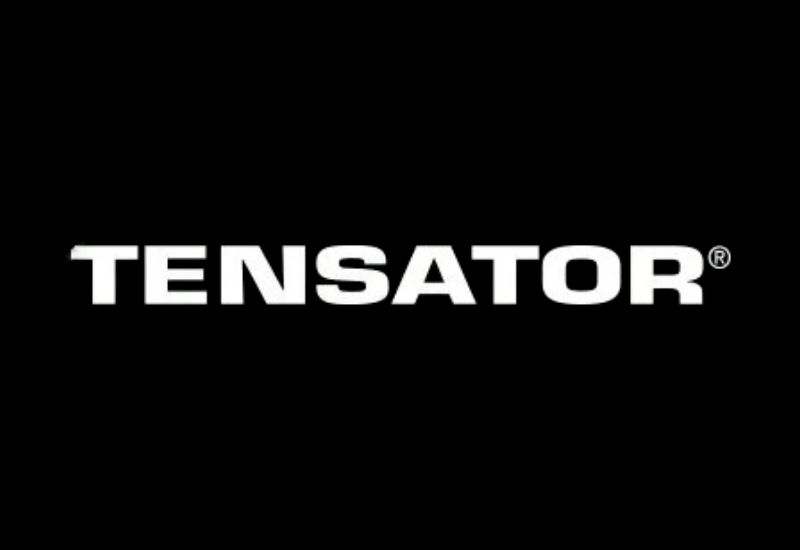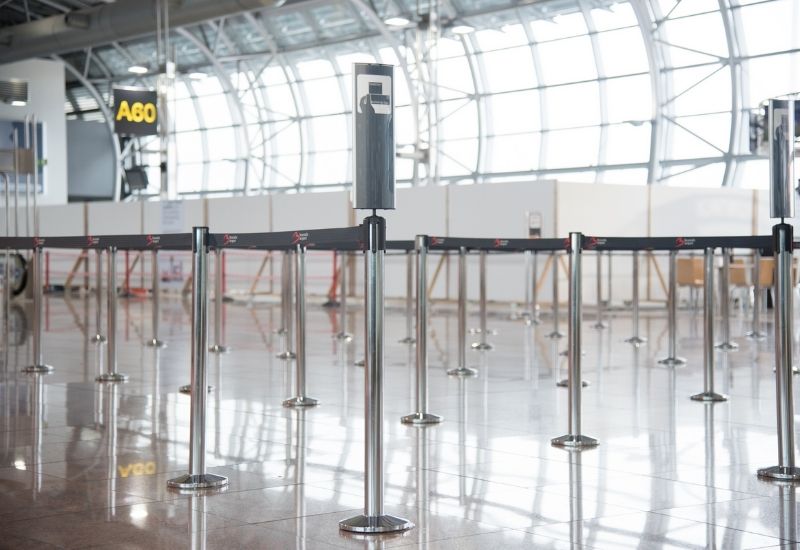Retractable Barriers Buyers Guide
At Discount Displays we have a large range of
retractable barriers
from the feature-packed industry leaders Tensator with their premium Tensa barriers (we are authorized distributors), to entry-level systems such as the queue master. With so many options, choosing the right system can be a difficult task. Buying retractable barriers can be a large investment, so you’ll want to get it right the first time.
With this in mind, we have used our experience to put together this buyer's guide to help you make the right choice. These are just some of the things you should consider when buying crowd control equipment.
Where are Retractable Barriers used?
You will have seen retractable belts at airports, in cinemas, conference halls, and even at schools—anywhere you need a flexible way of controlling the flow of people. When considering which range to go with, ask yourself how hard your barrier is going to have to work. Is the system going to stay in the same place, or are you going to be changing the configuration daily to alter crowd flow during busy periods? If the barrier system is going to be placed in a high footfall area or used often, then investing in one of our top-of-the-range systems, such as a premium Tensabarrier® with a higher spec, is the way forward.
Other words you may hear in place of Retractable Barrier: Belt barriers, Tape barriers, Queue barriers, Crowd Control barriers.
Indoor or Outdoor?
The suitability of a barrier to be used indoor or outdoors comes down to the materials that have been used and the weight of the bases.
The most durable material for an outdoor use barrier is stainless steel or Polycarbonate. Just keep in mind that not all stainless steel is of the same quality. Marine grade 304 stainless will last much longer than 201 stainless. Mild steel is great for indoor use but shouldn't be used outdoors as they are susceptible to rust in the elements.
Outdoor barriers also have heavier duty bases that can withstand being driven over, as well as water/sand fillable bases to hold up against the wind. Other features you may see are wheels on indoor barriers to make moving them around easier, and stackable bases for more efficient storage.
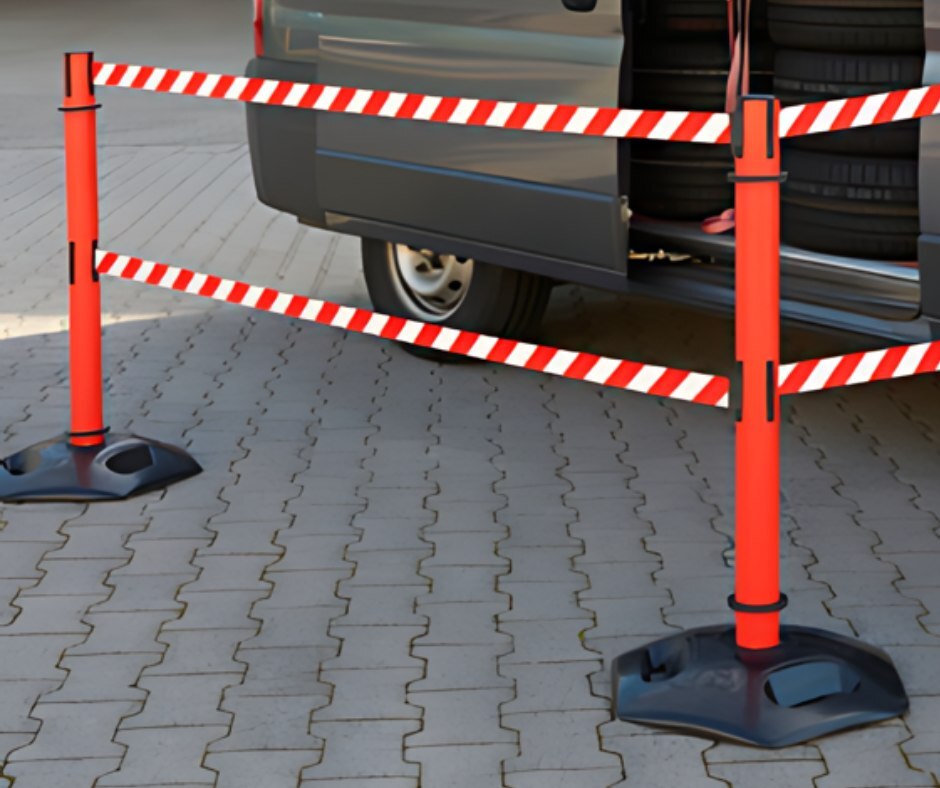
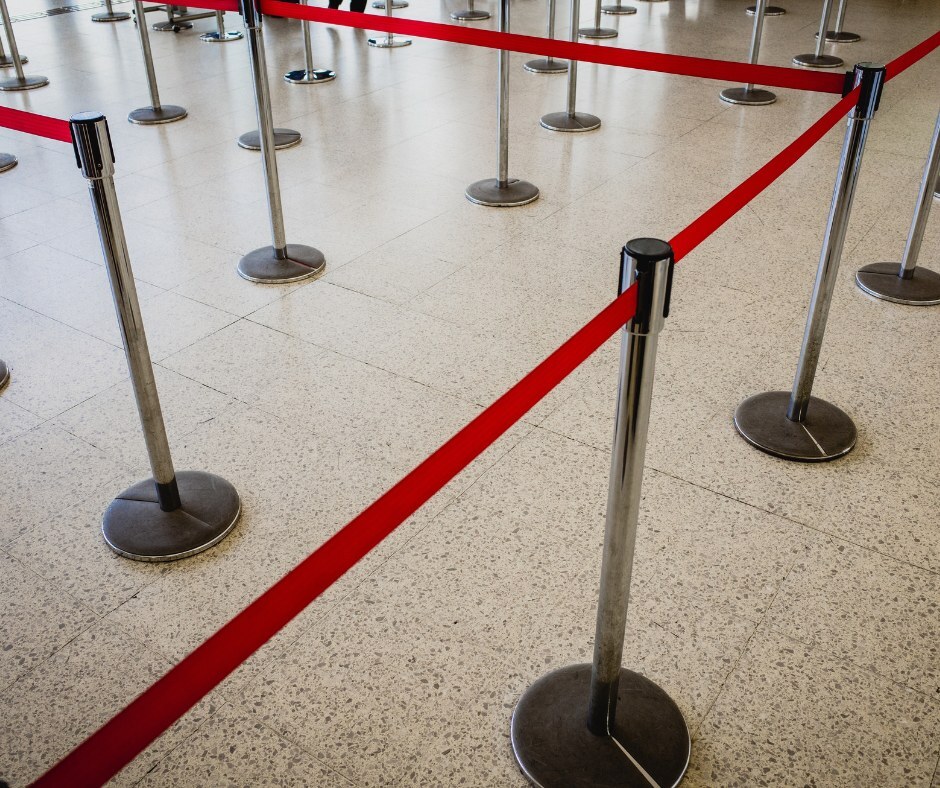
Cassettes & Tape Length
Our cassettes (the piece belts are wound into) are engineered to last and are tested up to a minimum of 10,000 cycles. Some units allow you to fit new belt cassettes yourself, so there is no need to buy a whole unit in case of damage.
Our barrier tape (also referred to as the belt or webbing) lengths range from 2 metres up to an impressive 7.6 meters. When buying barriers, consider the overall length you require, as you may find it cheaper buying fewer, longer units.
The listed length of the tape is the maximum possible length, so due to the clever retractable mechanisms used, barriers can be positioned at any distance apart up to this amount.
Release Mechanism
You will find different release mechanisms on retractable barriers:
Standard release: When you have a long line of barriers, your staff may want to take a shortcut which means releasing and reattaching the belt.
Safety or slow braking: Used to prevent injury when someone walks into the barrier. The safety release mechanism retracts the belt back slowly into the cassette unit. This also puts less strain on the hardware, preventing it from falling over.
Plain or Printed?
Most of the retractable barriers we sell are available in a plain tape option, in a variety of different colours. We also offer pre-printed tape with warning messages or chevron prints.
We also offer the option to add your own text, graphics, or branding to one or both sides of the belt. If this is something you are interested in, contact us and we can help you get the perfect design for your belt barrier. By using digital dye-printing we can produce high quality and accurate results in full colour.
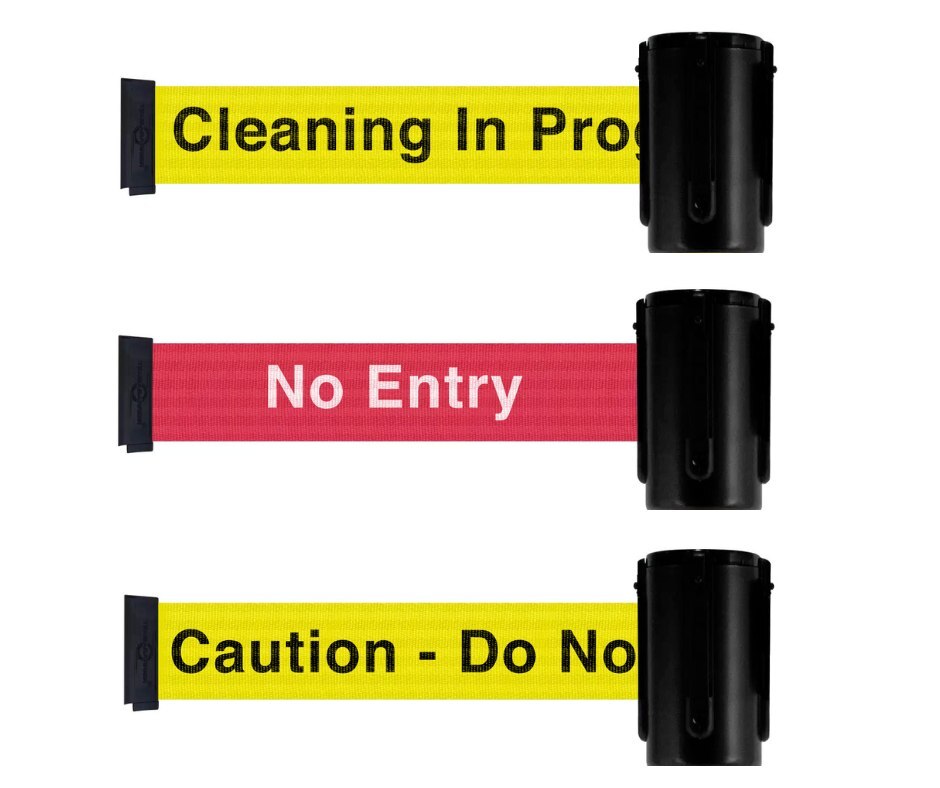
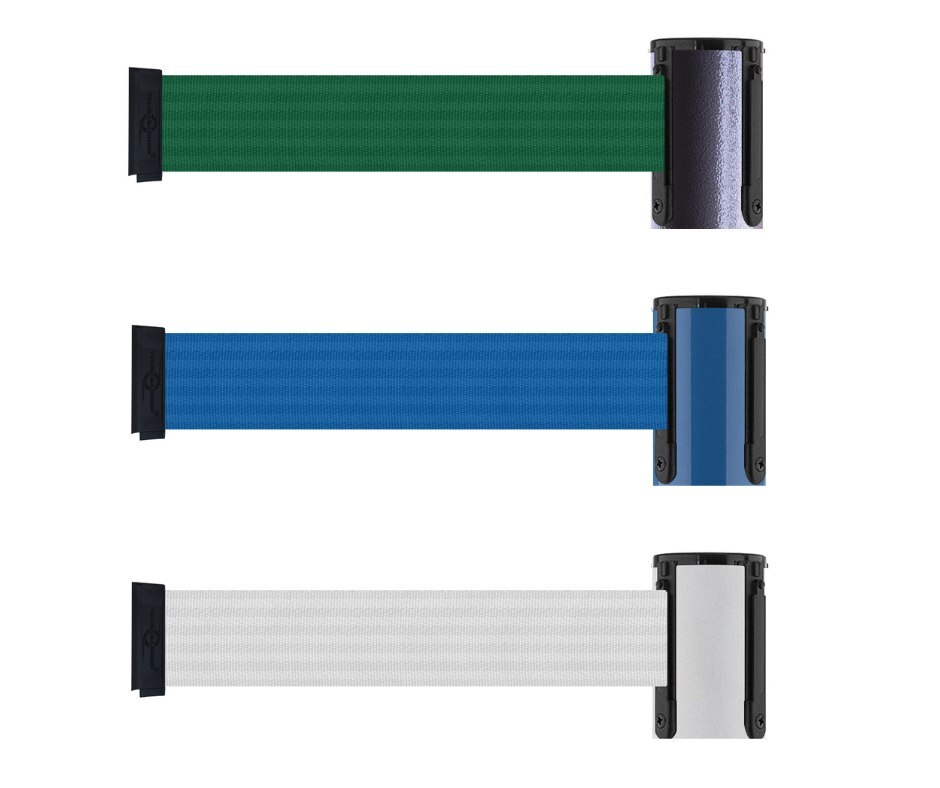
How Belts Attach
Most units have a 4-way belt attachment, which means that you can create 90° bends in your run of belts, or a central post that has 4 other barriers connected to it.
There are also some barriers that have 8-way connectors while other, more advanced systems, have mechanisms that allow you to take barriers off at any angle and add up to 17 other belts connected to one post. Such systems give you more flexibility in designing your barriers to suit your specific needs.
Belts can also be wall-mounted to save space. The end of the tape can either be attached to another wall or a free-standing post.
The most common type of belt end is a universal belt end but you will also find:
- Magnetic belt end
- S clip
- Panic break
- Permanent
- Removable
- Magnetic
- Clamp
Optional Accessories
Some retractable barriers host the ability to add accessories such as sign holders, product bowls, or small writing desks, allowing you even greater flexibility to make the most out of your system. Suction wall mounted barriers are also available for areas with limited space and when barriers need to be moved around often or to unusual places.
What is a Retractable Barrier?
Retractable barriers are an effective solution for managing queues and guiding foot traffic in a wide range of environments. These systems typically consist of a sturdy post, a weighted base, and a retractable belt with a clip that connects to another post or wall receiver. They are also known as belt barriers, tape barriers, queue barriers, and crowd control barriers.
At Discount Displays, we offer a broad selection of retractable barrier systems to suit various needs and budgets. Our range includes models from leading manufacturer Tensator, known for their durable Tensa barriers. As authorised distributors of Tensator products, we provide access to their premium range alongside more budget-friendly options, such as the QueueMaster system for everyday crowd control requirements.
Where are Retractable Barriers used?
Retractable belt barriers are a versatile and effective solution for managing the movement of people in both everyday and high-traffic environments. Whether you're guiding foot traffic, creating queues, or temporarily restricting access, these barriers provide a practical and professional way to stay organised and maintain safety. You’ll find retractable belt barriers in a wide range of locations, including:
- Airports - for managing check-in queues, security lines, and boarding gates
- Exhibition Stands - to organise lines at ticket counters or concession stands
- Conference halls and event venues - to guide attendees or restrict access to certain areas
- Schools and universities - for crowd control during events or to section off restricted zones
- Retail spaces and shopping centers - to manage customer queues or block off maintenance areas
- Stadiums and arenas - to direct crowds and manage entry points
- Museums and galleries - for guiding visitor flow or protecting exhibits
- Hotels and hospitality venues - to control guest traffic during events or busy times
- Hospitals and healthcare facilities - to section off areas or organise waiting areas
- Amusement parks and attractions - to manage ride queues and crowd movement
- Banks and post offices - to streamline customer service queues
- Construction sites - to section off unauthorised areas and manage flow
How Belts Attach
Most retractable barrier units feature a 4-way belt attachment system. This allows for connections on all four sides of a post, enabling configurations such as 90° corners or creating a central hub with belts extending in multiple directions. This setup is commonly used for queues or layouts where directional changes are needed.
Some systems expand on this with 8-way connectors, offering additional layout options. More advanced modular systems use rotating mechanisms or multi-slot hubs that allow belts to be connected or removed at any angle. These can support up to 17 separate belt connections on a single post, allowing for highly customised arrangements. This flexibility can be useful in dynamic spaces where standard linear layouts aren’t practical.
For wall-mounted units, the belt cassette (The inside mechanism where the belt is wound into) is fixed to the wall, and the belt can be secured to either a wall receiver plate or a freestanding post. This setup is ideal for closing off hallways, elevators, or restricted areas without the need for a full post and base unit.
The end of the belt (Referred to as the belt end) comes in several varieties:
- Universal belt end - The most common type, compatible with most standard receivers (The part that the belt secures to once pulled out) and posts.
- Magnetic belt end - Uses magnets to attach to metal surfaces, offering quick release and easy repositioning.
- S clip - A hook-style end that can be looped over fixed points such as rails or brackets.
- Panic break - Designed to release under pressure for quick emergency releases.
- Permanent - A fixed connection point that isn’t intended to be regularly moved or disconnected.
- Removable - Similar to permanent ends but are designed for easier disconnection and re-use.
- Clamp - Attaches to irregular surfaces, such as railings, where other types of belt ends may not be compatible.
How to choose the right Retractable Barrier for you
What are the different types of Retractable Barriers?
When deciding which range of retractable barriers is best suited to your environment, it’s important to consider how hard your barrier is going to have to work. Will the barriers remain in a fixed position, or will you need to adjust their layout frequently to manage changing crowd flow during peak times? In high-footfall areas where barriers are regularly repositioned, it’s advisable to opt for a more heavy-duty solution, such as a premium Tensabarrier® for long-term reliability.
Freestanding Retractable Barriers
Freestanding retractable barriers are ideal for indoor spaces. They are easy to reposition, and come in various post finishes and base styles for stability. Belts are available in multiple colours, lengths, and can include custom messaging. Single or double belt options allow for different levels of crowd control.
Outdoor Retractable Barriers
Built for external use, outdoor barriers are weather-resistant and durable. They feature weatherproof materials, non-scratch finishes, heavy-duty posts, and weighted bases for added stability in windy conditions. Available in single or double belt configurations for adaptability.
Wall-mounted Retractable Barriers
Wall-mounted barriers save floor space and reduce potential hazards, making them ideal for warehouses and industrial settings. They come in indoor and outdoor models, with a variety of finishes and belt options. Outdoor barriers also have heavier duty bases that can withstand being driven over. Customisable in length and colour, they’re also available with single or double belts for clear, controlled access.
Cassettes & Tape Length
The cassettes are designed for durability and tested to withstand at least 10,000 cycles. Some models allow for easy cassette replacement, meaning you don’t need to purchase an entirely new unit if the belt becomes damaged.
Barrier tape (also known as the belt or webbing) is available in lengths ranging from 2 metres up to an impressive 7.6 metres. When selecting your barriers, consider the total span you need to cover - you may find it more cost-effective to choose fewer units with longer belts.
The tape lengths shown are the maximum extension. Due to the retractable mechanism, the barriers can be set up at any distance up to this limit, offering flexible positioning.
Release Mechanism
Retractable barriers are available with different release options:
- Standard release - Ideal for long runs of barriers, allowing staff to easily disconnect and reconnect the belt when needing to take a shortcut.
- Safety or slow braking - Designed to reduce the risk of injury if someone walks into the barrier. This mechanism slowly retracts the belt back into the cassette, reducing impact and minimising strain on the unit, which helps prevent tipping.
Belt Design
Most retractable barriers come with plain tape options available in a range of colours. There are also pre-printed options with standard warnings or chevron designs. Digital dye printing is used for our belts to produce high-quality, full-colour results with excellent detail and accuracy.
Customisation is also available - you can add your own text, graphics, or branding to one or both sides of the belt. If this is of interest, get in touch with us on 020 8664 5660 or at sales@discountdisplays.co.uk and we’ll create a tailored solution just for you.
What other Features and Accessories are available?
Many retractable barriers are compatible with optional accessories such as sign holders, product display bowls, or compact writing desks. These additions provide extra flexibility, helping you get more functionality out of your system.
For spaces where floor area is limited, where barriers need to be moved frequently, or are positioned in unconventional locations, suction-mounted wall barriers offer a practical solution.
Some models also include wheels for easier setup and transport. Additionally, stackable bases are available to simplify storage and make handling more efficient.
Why choose Discount Displays for your Retractable Barrier?
Top Range Product Quality
As official distributors of Tensator, we supply a variety of durable, high-performance systems designed for long-term use in busy environments. Whether you need barriers for retail spaces, events, or workplace safety, our products are built to withstand frequent use while maintaining smooth functionality.
Tailored Support
Choosing the right barrier depends on your specific needs, and our team is here to help. We offer personalised advice on the best options for your location. From freestanding models for flexible placement to wall-mounted systems for permanent setups, we can guide you through the process. Call us at 020 3666 1559 to discuss your requirements.
Extensive Selection
Our range includes various finishes, belt types, and mounting styles to suit different environments. Options include weather-resistant barriers for outdoor use, high-visibility belts for safety, and branded webbing for promotional purposes.
Quick Turnaround
With quick delivery times - many available within 2-5 working days, and some eligible for next-day dispatch - you can implement an effective crowd management solution without unnecessary delays.
Unbeatable Value
We pride ourselves on offering competitive pricing without compromising on quality. Thanks to strong supplier relationships, we pass cost savings on to our customers. To back this up, many of our retractable barriers come with a 2-year hardware guarantee, giving you confidence in your investment.





